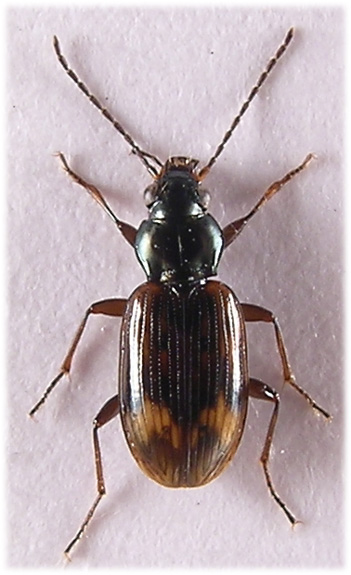
Female
A large Bembidion, 5-6mm., which is soon recognised in the field. Antennae and palpi dark with base lighter, maxillary palpi long with reduced terminal segment. Two long setae situated within the inside margin of each eye, the anterior of which is surrounded by a shiny elevated area at the base of the frontal furrows. Frons smooth and dulled from dense microsculpture. Eyes prominent, temples more or less parallel.
Pronotum broadly cordate and strongly margined laterally, with large basal fovea and a tiny longitudinal ridge between those and the lateral margins. Base almost straight with a long seta at hind angles and centre of side margin.
Elytra with shoulders rounded (cf. B.lampros, B.properans) and striae punctate and complete to apex. Two punctures within third interstice free, not touching striae �. Dark brown and irridescent due to transverse microsculpture, with various lighter markings but these may be obscured or missing; usually humeral, apical and arranged transversely before or after middle. Legs brown, femora darker with top surface black or with metallic green lustre. Forebody black and dull metallic from microsculpture, contrasting with elytra but often marked metallic green on labrum, forntal furrows and margins of pronotum.
Male with two dilated protarsal segments
� B.guttula Fab., B.articulatum Panz. (esp. common), B.varians Ol., B. tetracolum Say, B.lunulatum Geoff., B.biguttatum Fab., Pterostichus diligens Sturm, P.minor Gyll., Elaphrus cupreus Duff., E.riparius L.
� Posterior puncture somtimes closely approaches 2nd stria but is never situated within it.
Description from 5 Watford specimens at X40
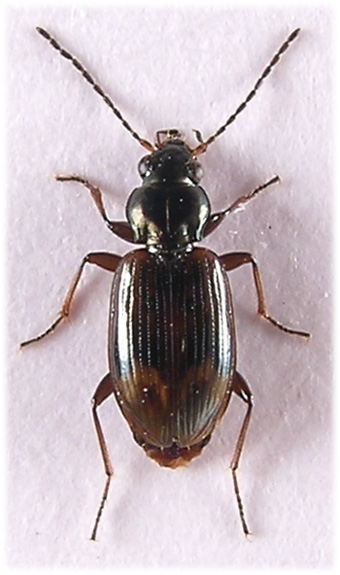
Female
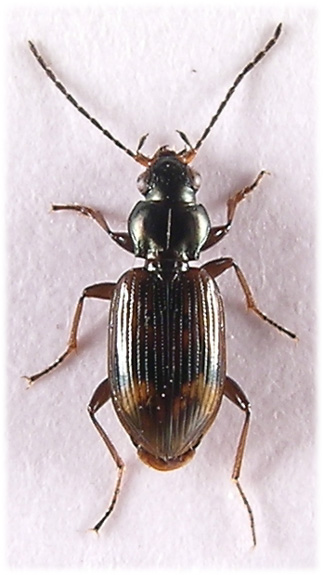
Male
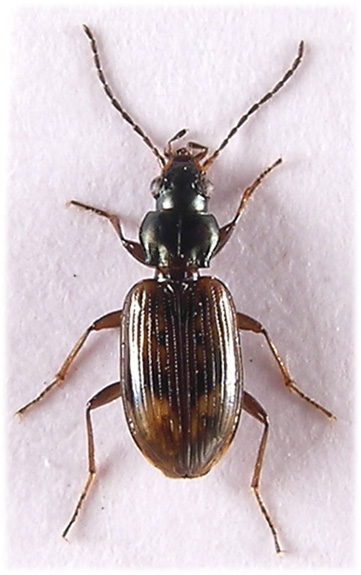
Female
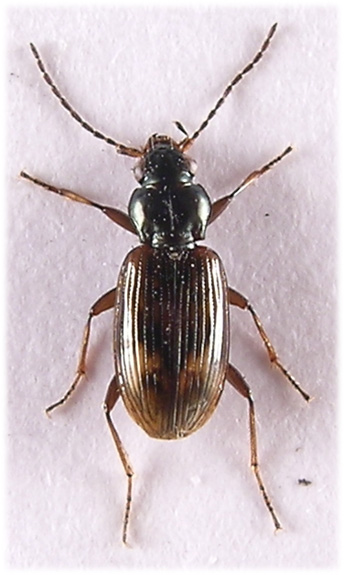
Female
Home